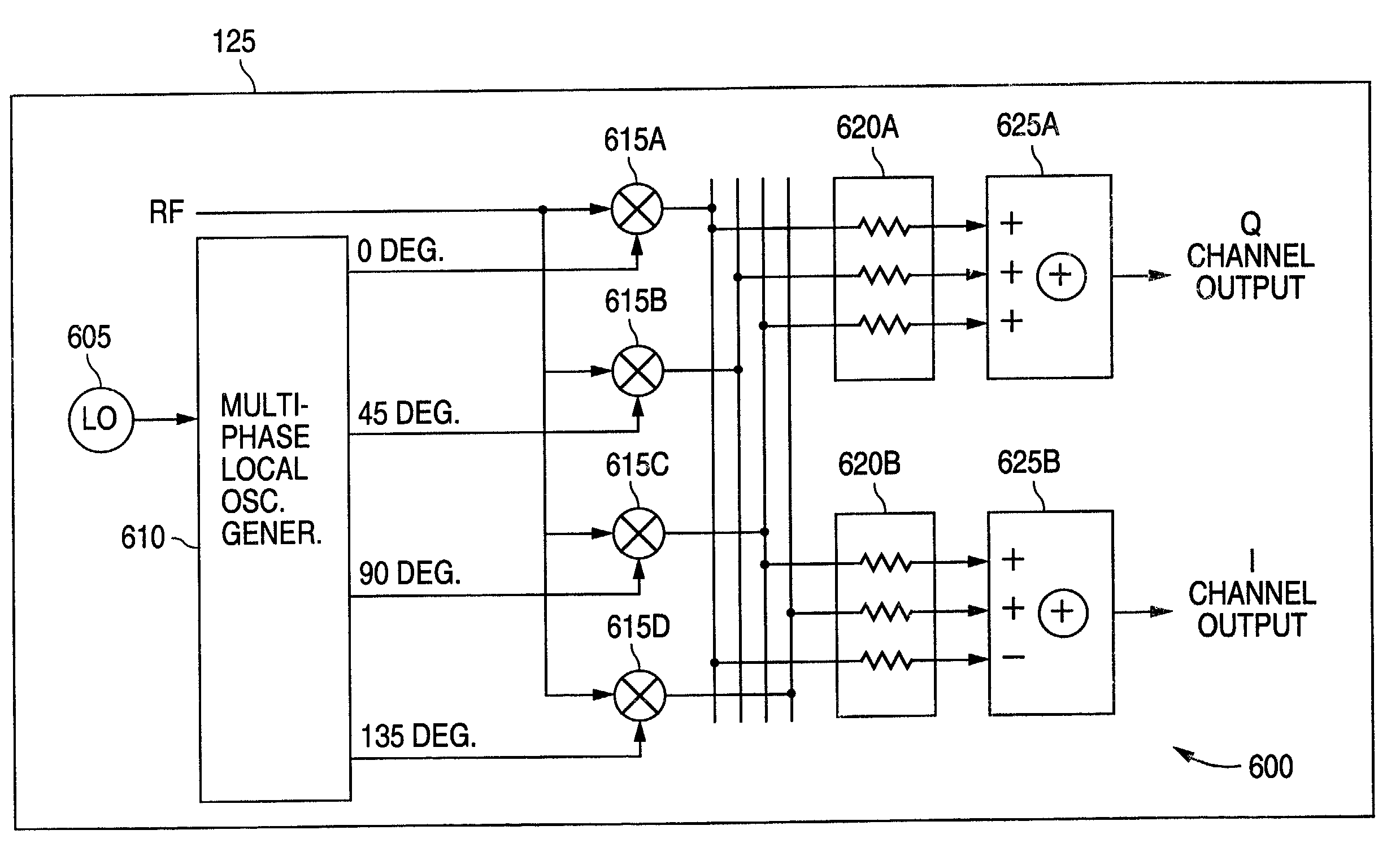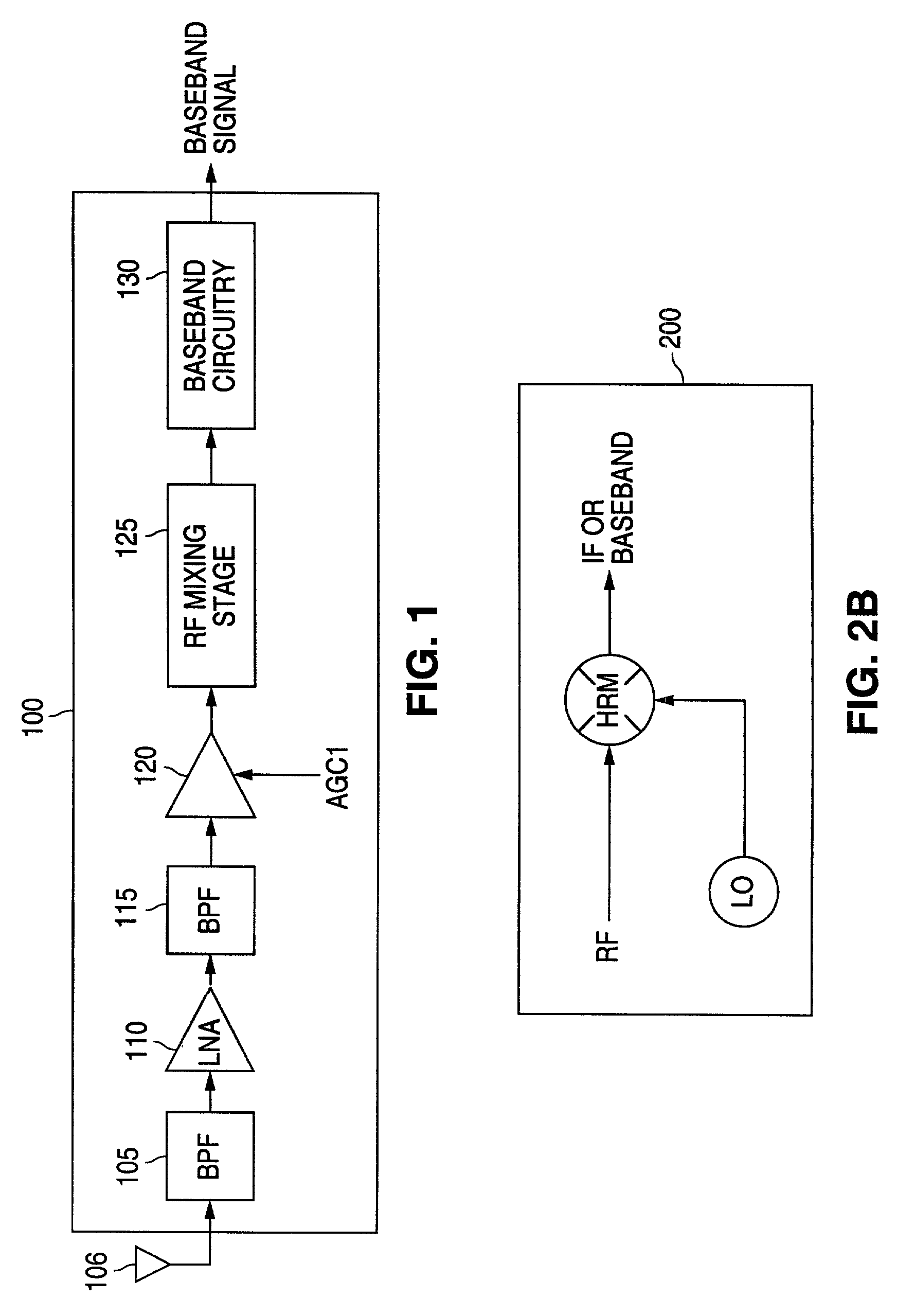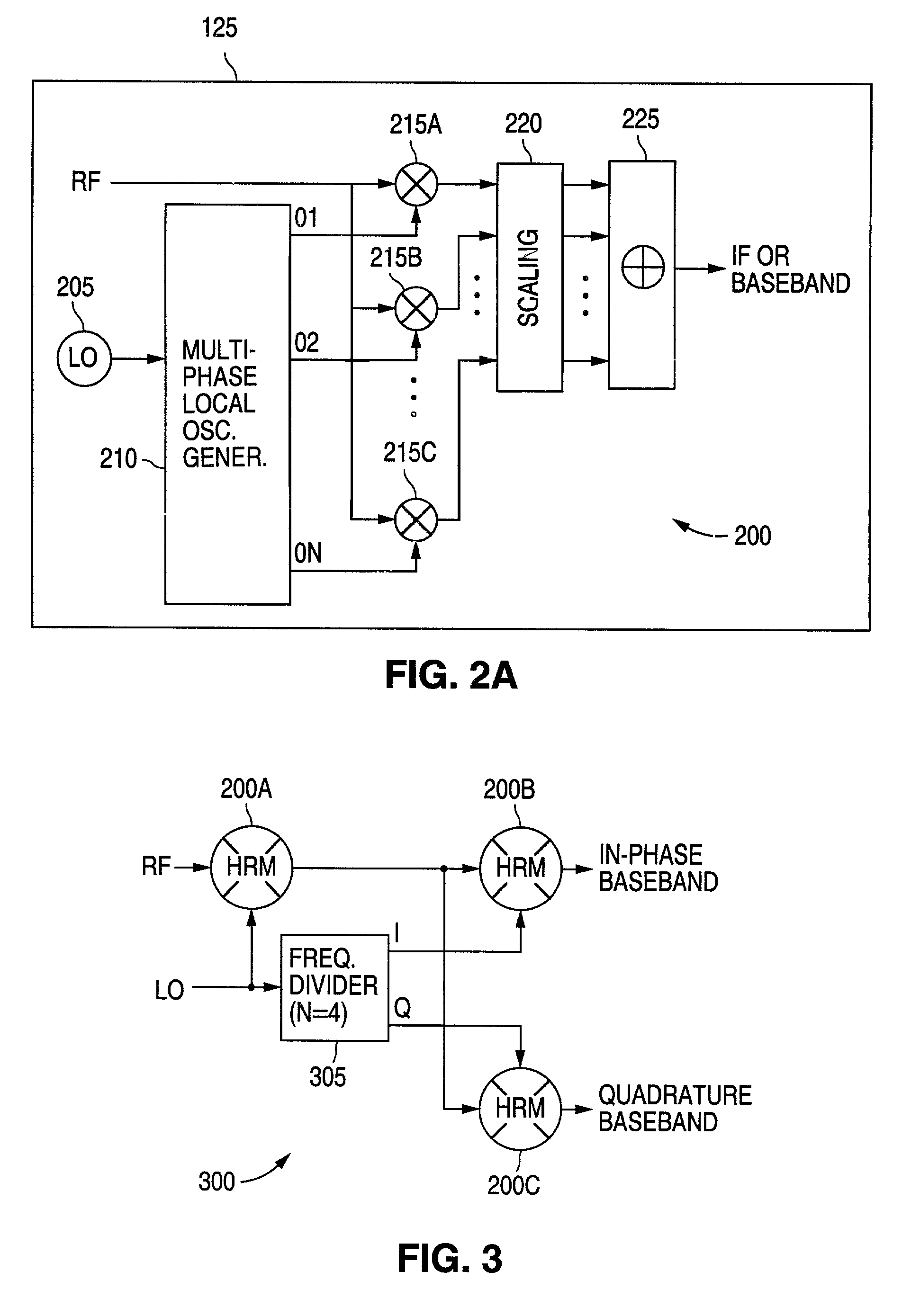Harmonic rejection mixer and method of operation
a mixer and harmonic technology, applied in the field of radio frequency receivers, can solve the problems of insufficient total available suppression from existing methods, inability to achieve adequate out-of-band harmonic suppression, and inability to manufacture high-performance radios, etc., to achieve superb suppression and suppress unwanted responses.
- Summary
- Abstract
- Description
- Claims
- Application Information
AI Technical Summary
Benefits of technology
Problems solved by technology
Method used
Image
Examples
Embodiment Construction
[0024]FIGS. 1 through 11, discussed below, and the various embodiments used to describe the principles of the present invention in this patent document are by way of illustration only and should not be construed in any way to limit the scope of the invention. Those skilled in the art will understand that the principles of the present invention may be implemented in any suitably arranged radio frequency (RF) receiver.
[0025]FIG. 1 illustrates selected portions of the receive signal path of exemplary RF receiver 100 according to one embodiment of the present invention. RF receiver 100 may be implemented in any conventional one-way or two-way RF communication device, including a cell phone, a wireless network card, a two-way pager, and the like. For the purpose of simplifying the explanation of the present invention, the transmitter portion of a two-way communication embodiment of the present invention is not shown.
[0026]The RF receive path through RF receiver 100 comprises band pass fi...
PUM
 Login to View More
Login to View More Abstract
Description
Claims
Application Information
 Login to View More
Login to View More - R&D
- Intellectual Property
- Life Sciences
- Materials
- Tech Scout
- Unparalleled Data Quality
- Higher Quality Content
- 60% Fewer Hallucinations
Browse by: Latest US Patents, China's latest patents, Technical Efficacy Thesaurus, Application Domain, Technology Topic, Popular Technical Reports.
© 2025 PatSnap. All rights reserved.Legal|Privacy policy|Modern Slavery Act Transparency Statement|Sitemap|About US| Contact US: help@patsnap.com



